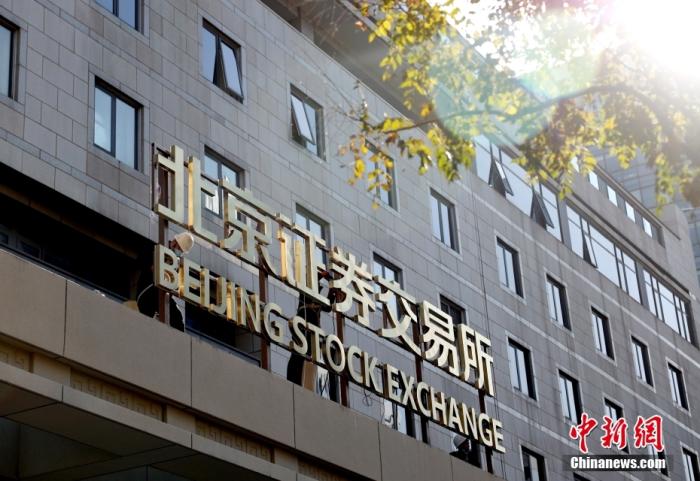(Observation of the Two Sessions) China welcomes the era of the comprehensive registration system, what "hard bones" will the reform have to gnaw?
China News Agency, Beijing, March 9 (Reporter Xia Bin) "Completely implement the stock issuance registration system", this major reform task was first proposed at the 2021 Central Economic Work Conference, and was mentioned again in the 2022 government work report.
This year, A shares will usher in the era of registration system. What is the basis for the implementation conditions?
What are the "hard bones" to be gnawed by the reform?
"Overall, the progress of the registration-based pilot reform is in line with expectations, the issuance and listing cycle has been greatly shortened, information disclosure has become more stringent and sufficient, a market-oriented mechanism for issuance pricing has been basically formed, the responsibilities of intermediaries have been further consolidated, the market has been running smoothly, and the registration-based pilot reform has achieved expectations. Effectiveness," said Liu Xinhua, deputy chairman of the National People's Congress Finance and Economics Committee and former vice chairman of the China Securities Regulatory Commission.
Data map: Beijing Stock Exchange.
Photo by China News Agency reporter Bian Zhengfeng
For more than three years, the registration system has been "breaking the ice" on the Science and Technology Innovation Board. From the pilot exploration to the gradual rollout, the Beijing Stock Exchange has implemented the registration system since its establishment. During this process, a large number of science and technology innovation enterprises have landed in the capital market. , the scale of equity financing in the capital market has increased significantly.
According to statistics, in 2021, 481 A-shares will be listed on the Shanghai and Shenzhen stock exchanges, raising 535.1 billion yuan, an increase of 60.9 billion yuan over the previous year.
Jiang Yang, member of the National Committee of the Chinese People's Political Consultative Conference and former vice chairman of the China Securities Regulatory Commission, bluntly said that since the pilot of the registration system for stock issuance on the Science and Technology Innovation Board and the Growth Enterprise Market has been implemented successively, the concept of registration system has gradually gained popularity, and the ability of all parties in the market to deal with registration-based stock issuance has been significantly improved. , the capital market has continued to develop steadily and healthily, and the conditions for the full implementation of the stock issuance registration system have been met.
But reforms are still in progress, and the more advanced each systemic reform is, the more deeply it touches, the more "hard bones" it has to gnaw.
"The key and difficulty of the full implementation of the registration system lies in the reform of the main board." Xiao Gang, member of the National Committee of the Chinese People's Political Consultative Conference and former chairman of the China Securities Regulatory Commission, pointed out that the main board of Shanghai and Shenzhen is different from the Science and Technology Innovation Board and the Growth Enterprise Market, involving many existing listed companies and investors. The scale of listed companies is relatively large, and their business operations are at a relatively mature stage. From the perspective of industry distribution, many of them still belong to traditional industries.
Xiao Gang further stated that, in order to implement the registration system on the main board, we must adhere to the principle of stability and seek progress while maintaining stability, which not only reflects the requirements of the registration system, but also conforms to the characteristics of the main board.
It is also the main board reform, and the relevant systems of the Shanghai and Shenzhen stock exchanges are also different. Further research is required in formulating the reform plan to ensure the smooth implementation of the reform.
Yan Feng, member of the National Committee of the Chinese People's Political Consultative Conference and chairman of Guotai Junan International, said that the registration system reform generally follows the general direction and principle of "subtraction" of issuance and listing conditions, and "addition" of listed companies and intermediaries.
In this context, how to promote the responsibility of all parties in the market and build a virtuous circle of capital market ecology requires further clear regulations.
"The process of the registration system reform cannot be smooth sailing. It is a profound change involving the concept of supervision, the supervision system and the way of supervision. It requires the concerted efforts and joint support of all sectors of society." Liu Xinhua pointed out that the current registration system reform is still in place and imperfect. In particular, the responsibilities of issuance and registration need to be further clarified, the regulatory boundary between the CSRC and the exchange needs to be clearer, the transformation of issuance supervision is still in the process, and the supporting system for the registration system needs to be further improved.
Data map: China Securities Regulatory Commission.
Photo by China News Agency reporter Zhang Hao
Liu Xinhua suggested that the next step in the reform of the registration system needs to do four aspects of work.
First, continue to improve the information disclosure system, and promote information disclosure to be more concise, clear, and easy to understand.
The second is to consolidate the responsibilities of intermediaries, study and formulate due diligence work guidelines for intermediaries, and clarify and implement the responsibilities of all parties.
The third is to standardize the registration system application, judgment, and review standards, and quantify the entire process and each link of the review and registration.
The fourth is to establish a market-oriented delisting mechanism suitable for the actual situation of China's capital market, realize the normalization of delisting, and make the "shell value" of listed companies tend to return to zero.
Liu Xinhua said that by building an efficient and complete institutional system, we must do a solid and steady job in the reform of the market-wide registration system to ensure that this major reform will be carried out steadily and long-term.
(over)

